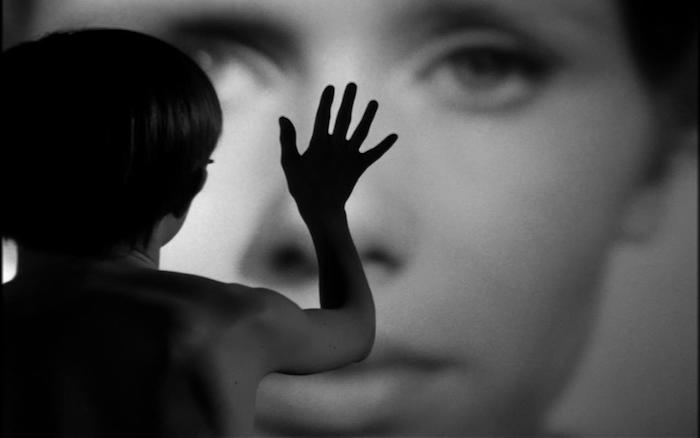Dei poteri dell’archi-schermo e dell’ideologia della 'trasparenza 2.0'
Abstract
La nostra esperienza degli schermi elettronici e digitali può considerarsi come la pars pro toto di quel “dispositivo” (nell’ampio l’ampio significato socio-culturale attribuito a questo termine da Foucault) che ci sta avviluppando. Per questo ritengo decisivo elaborare quanto chiamerei un’antropologia degli schermi, alla quale ritengo possa contribuire la valenza euristica offerta da quanto ho proposto di definire “archi-schermo”, da intendersi quale principio transistorico della mostrazione e insieme dell’occultamento istituito dal potere di rendere visibile e nel contempo di rendere invisibile che è intrinseco agli schermi. Tale principio contribuisce dunque a produrre, in diversi contesti storico-culturali, diversi regimi di visibilità. A sua volta, ciascuno di essi s’intreccia ad un certo regime di dicibilità ed insieme essi dirigono l’attenzione e l’inattenzione dei nostri sguardi quanto quelle dei nostri discorsi. A tale proposito, il display – il cui nome tende oggi ad affiancare o addirittura a sostituire la parola “schermo”, attribuendo alla superficie che designa l’esclusiva funzione di esporre – si dimostra emblematico degli attuali regimi di visibilità e dicibilità. Esso contribuisce infatti a affermare l’ideologia di quella che ironicamente classifico “Trasparenza 2.0”. Tale ideologia identifica il significato della trasparenza con la pretesa assenza di ogni mediazione e comporta perciò implicazioni di grande rilievo anche politico.
Downloads
Riferimenti bibliografici
Albera François – Tortajada Maria, “Introduction to an Epistemology of Viewing and Listening Dispositives”, in F. Albera, M. Tortajada (eds.), Cinema Beyond Film, Amsterdam, AUP, 2010: 9-22.
Altman, Charles F., “Psychoanalysis and Cinema: The Imaginary Discourse”, Quarterly Review of Film Studies, 2 (August 1977): 260-264.
Baudry, Jean-Louis, “Effetti ideologici prodotti dall’apparato di base” [1970], in Id., Il dispositivo. Cinema, media, soggettività, cura di R. Eugeni e G. Avezzù, tr. it. di G. Avezzù e S. Arillotta, introduzione di R. Eugeni, Brescia, La Scuola, 2017: 51-77.
Belting, Hans, Antropologia delle immagini [2001], cura e tr. it. di S. Incardona, Roma, Carocci, 2011.
Belting, Hans, “Immagine, medium, corpo: un nuovo approccio all’iconologia” [2005], in A. Pinotti, A. Somaini (a cura di), Teorie dell’immagine. Il dibattito contemporaneo, Milano, Raffaello Cortina, 2009: 74-98.
Borradori, Giovanna, “Between transparency and surveillance: Politics of the secret”, Philosophy and Social Criticism, vol. 42, n° 4-5, 2016: 456-464.
Carbone, Mauro, Filosofia-schermi. Dal cinema alla rivoluzione digitale, Milano, Raffaello Cortina, 2016.
Casetti, Francesco, La galassia Lumière: Sette parole chiave per il cinema che viene, Milano, Bompiani, 2015.
Debray, Régis, Vita e morte dell’immagine. Una storia dello sguardo in Occidente [1992], tr. it. di A. Pinotti, Milano, Il Castoro, 1999.
Deleuze, Gilles, Foucault [1986], tr. it. di P.A. Rovatti e F. Sossi, Milano, Feltrinelli, 1987.
Deleuze, Gilles, Che cos’è un dispositivo? [1989], tr. it. di A. Moscati, Napoli, Cronopio, 2007.
Eggers, Dave, The Circle [2013], tr. it. di V. Mantovani, Il cerchio, Milano, Mondadori, 2014 (edizione Kindle: per ogni citazione si rinvia al numero della rispettiva posizione indicato in tale edizione).
Foucault, Michel, L'uso dei piaceri. Storia della sessualità 2 [1984], tr. it. di L. Guarino, Milano, Feltrinelli,1991, 20047.
Foucault, Michel, “Il gioco di Michel Foucault” [1977], tr. it. di D. Borca e V. Zini, in Id., Follia e psichiatria. Detti e scritti 1957-1984, Milano, Raffaello Cortina, 2006: 155-191.
Grespi, Barbara, Dis-pl(a)y, in R. Eugeni - M. Fanchi (a cura di), La Galassia Casetti. Lettere di amicizia, stima, provocazione, Milano, Vita e Pensiero, 2017: 133-136.
Grusin, Richard, “Radical Mediation” [2015], cura e tr. it. di A. Maiello, in Id., Radical mediation. Cinema, estetica e tecnologie digitali, Cosenza, Pellegrini, 2017: 221-268.
Han, Byung-Chul, La società della trasparenza [2012], tr. it. di F. Buongiorno, Milano, Nottetempo, 2014.
Harcourt, Bernard E., Exposed: Desire and Disobedience in the Digital Age, Cambridge, MA, Harvard University Press, 2015.
Huhtamo, Erkki, Elementi di schermologia. Verso un’archeologia dello schermo [2004], tr. it. di R. Terrosi, Pompei, Kaiak, 2015.
Kosslyn, Stephen M., Image and Mind, Cambridge, MA-London, Harvard University Press, 1980.
Lyotard, Jean-François, Discorso, figura [1971], tr. it. di E. Franzini e F. Mariani Zini, Milano, Unicopli, 1988, revisione e cura di F. Mazzini, Milano, Mimesis, 2008.
Lyotard, Jean-François, La condizione postmoderna [1979], tr. it. di C. Formenti, Milano, Feltrinelli, 1981.
Marx, Karl - Engels, Friedrich, L’ideologia tedesca [1932], tr. it. di F. Codino, Roma, Editori Riuniti, 19672.
McLuhan, Marshall, Capire i media. Gli strumenti del comunicare [1964], tr. it. di E. Capriolo, Il Saggiatore, 1967, 2011.
Manovich, Lev, Il linguaggio dei nuovi media [2000], tr. it. di R. Merlini, Milano, Olivares, 2002.
Mitchell, W.J.T., “Screening nature (and the nature of the screen)”, New Review of Film and Television Studies, vol. 13, n° 3, 2015: 231-246.
Serroy, Jean – Lipovetsky, Gilles, “Les pouvoirs de l’écran”, Revue Écrans, n. 1, 2013: 154-168.
Simondon, Gilbert, Sulla tecno-estetica [lettera datata 3 luglio 1982], cura e tr. it. di E. Binda, Milano, Mimesis, 2014.
Tani, Stefano, Lo schermo, l’Alzheimer, lo zombie. Tre metafore del XXI secolo, Verona, Ombre corte, 2014.
Wajcman, Gérard, L’Œil absolu, Paris, Denoël, 2010.
Informazioni sul copyright
Questa licenza permette a terzi di riprodurre, distribuire, comunicare al pubblico, esporre in pubblico, rappresentare, eseguire, recitare e modificare quest'opera, purché vengano citati l'autore e la rivista. Questa è la più ampia tra le licenze Creative Commons, rispetto alle libertà concesse a terzi sulle opere licenziate sotto Attribuzione.









